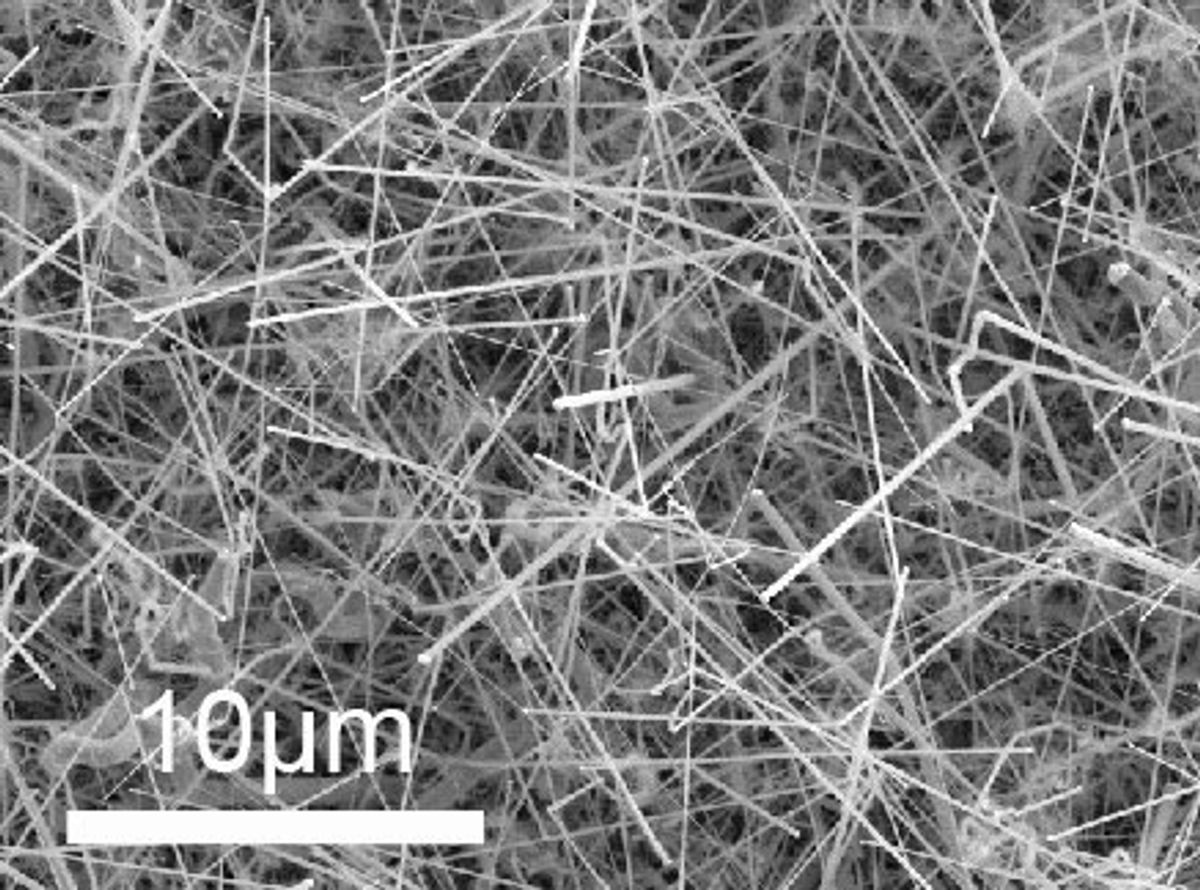15 August 2011—By swapping graphite for silicon as an electrode material, two start-ups have made lithium-ion batteries that can hold twice as much energy as they do today, which would allow cellphones and electric vehicles to run twice as long between charges. Both companies—Nexeon, in Abingdon, England, and Amprius, in Menlo Park, Calif.—say their silicon electrode technology will be on the market in the next two years.
Nexeon, which makes silicon anode material, recently raised US $65 million. It will use the money to set up a facility that will produce 250 metric tons of the material each year. The company is working with top portable electronics battery makers and expects to have its silicon anodes in notebooks and cellphones in two years.
Battery maker Amprius, meanwhile, is partnering with consumer electronics manufacturers and aims to bring its batteries to market by early 2012. Several automakers are evaluating both companies’ electrode materials for use in electric vehicle batteries.
In a lithium-ion battery, lithium ions move from the cathode to the anode during charging, while electrons flow through the external circuit; the process is reversed during discharge. The more lithium an anode can hold, the more total electric charge the battery can store. Lithium-ion batteries have used graphite anodes for the past 20 years. The charge storage capacity of the material has reached its peak, says Bill Macklin, Nexeon’s chief technical officer. Silicon can, in theory, store 10 times as much charge per weight as graphite, which itself is capable of 370 milliampere-hours per gram. But practical anodes have been hard to make, because as lithium ions move in and out of silicon, the material expands and contracts considerably. "The volume changes associated with the repeated charge-discharge cycles destroy silicon," Macklin says. "It turns to dust."
Amprius and Nexeon overcome this issue by using different forms of structured silicon, which can swell and shrink without suffering as much mechanical stress as typical forms of silicon.
Amprius, founded by materials science professor Yi Cui of Stanford University, uses an array of vertical silicon nanowires, each of which has a thin, reinforcing metal core. The company, building on Cui’s work, has already made prototype batteries that store twice the energy of comparable conventional batteries. Last year, Amprius demonstrated a battery that can complete 250 charge-discharge cycles before its charge capacity drops below 80 percent. The company is now close to meeting the performance goal of the 500 cycles needed for a consumer electronics battery, Cui says. For electric vehicles, the battery would need to go through at least 3000 cycles.
One challenge the company faces is cost. The nanowires are currently made using the expensive process of chemical vapor deposition. "How to make wires at a low cost is still a challenge we’re trying to overcome," Cui says.
Nexeon’s anode material is a powder of silicon particles whose surfaces are chemically etched to create submicrometer pillars. The simple room-temperature process is cheaper than chemical vapor deposition, Macklin says. Moreover, battery manufacturers could simply replace the graphite powder they currently use with the silicon powder. Prototype battery cells using the new anode material store about 50 percent more charge than commercial cells and can handle 500 cycles.
Other silicon contenders for lithium-ion anodes also look promising. Jaephil Cho, a battery researcher at the Ulsan National Institute of Science and Technology, in South Korea, has developed a nanoporous anode material by chemically etching tiny holes into micrometer-size silicon particles. He is working with several South Korean companies, including battery maker LG Chem, whose batteries are in the Chevy Volt. The walls between the pores in Cho’s scheme are only around 40 nanometers thick. So "the top challenge is how to stabilize the structure," he says.
Cho has also collaborated with both Stanford’s Cui and LG Chem on silicon nanotube anodes, which have more surface area and hence store more charge than other silicon nanomaterials.
The cost of producing nanostructured silicon anodes might eventually determine their popularity. And their impact could be limited by their partner, the cathode. Today’s cathodes, made from various lithium compounds, have a capacity of 200 mAh/g. Increasing the capacity of anodes fivefold means a battery would need that much more cathode material. Several start-ups and researchers, including Cui and Cho, are also trying to come up with a better cathode.
About the Author
Prachi Patel is an IEEE Spectrum contributing editor who regularly writes about careers, energy, and the environment. In the August 2011 issue, she reported on how a new ranking system for EE programs has unseated some big-name schools.
